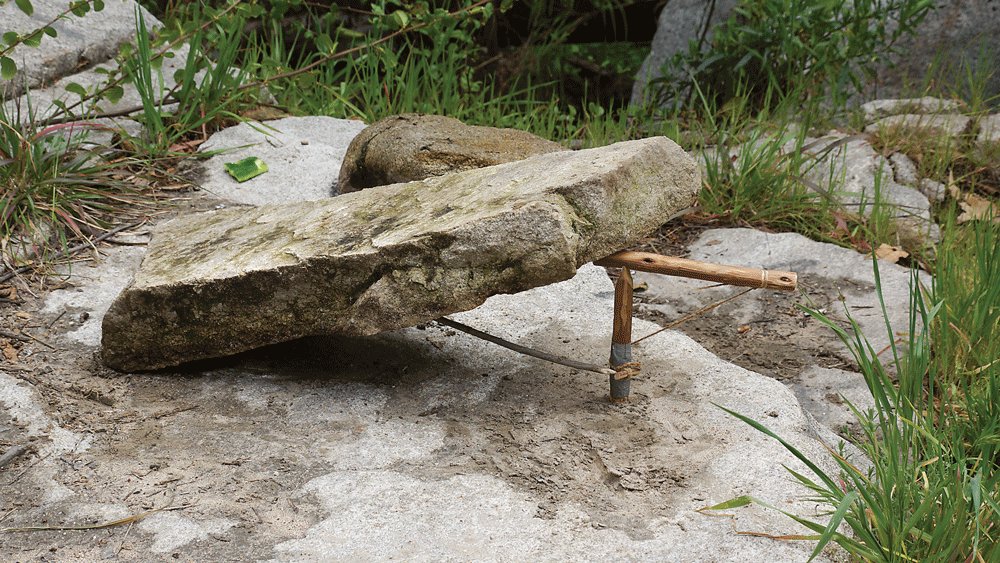Traps & Snares

The easiest and quickest way to provide a meal for yourself is via traps and snares. Animals are habitual and will follow the same trails to and from their food source. Take notice of those trails and observe the animal patterns. Set your traps or snares accordingly.
> The scent of the actual animal’s scat or urine is the best lure for the same species.
— JAMIE L BURLEIGH, ONEFOOTINTOTHEWILD.COM
> Choose wisely when making a meat gathering/ trapping kit for your long-term survival kit. Snares and snare wire are a one-time use item in almost all cases.
— JAMIE L BURLEIGH, ONEFOOTINTOTHEWILD.COM
> Trapping is a numbers game. The more you set the better your success. I can carry 2000 fish hooks in the same area and weight that a single rat trap would take up in my kit.
— JAMIE L BURLEIGH, ONEFOOTINTOTHEWILD.COM
> Hot air rises during the day and cold air sweeps down the valleys at night. Therefore, smells drift uphill in the daytime and downhill at night. Stay upwind of potential meals.
— BOB CARSS, THE SAS GUIDE TO TRACKING
> Clothing can be smell-neutralized by hanging it up on a clothes line to weather for a few days. I would not recommend burying your equipment or hanging it over a fire, as this will only make you smell like a ploughed field or a burned out fire and the quarry will be alerted.
— BOB CARSS, THE SAS GUIDE TO TRACKING
> In creeks and small streams, use saplings to create a fish trap and funnel. The opening should be on the upstream side so the current will aid in the funneling process. To herd fish into your trap, start upstream and wade toward your corral.
— GREG DAVENPORT, SURVIVING COLD WEATHER
> To make a loop snare for small mammals, use a slipknot that tightens down when the animal puts his head through it and lunges forward. Place at least 15 for every one animal you wish to catch along den openings and well-traveled trails.
— GREG DAVENPORT, SURVIVING COLD WEATHER
> All birds can be eaten (and so can their eggs). A heavy stick thrown at a flock of birds may knock one to the ground, but the best method is to capture ground-living birds like pheasant, quail, etc., by using snares or a trench trap.
— REID KINCAID, THE EXTREME SURVIVAL ALMANAC
> Consider using a hook and bait for scavenger birds, similar to catching a fish. Hang the hook and bait from a tree. Leave some slack so the bird has time to swallow it and take flight.
— CLIVE JOHNSON, SURVIVAL TIPS: 150 WAYS TO SURVIVE EMERGENCY SITUATIONS
> All manner of rodents can be eaten, but if it feeds off of trash, discard the head and guts before eating. Construct a rodent trap by placing a bucket in the ground with a piece of bait hanging over it. Line the bucket with plastic so the animal has difficulty climbing out.
— REID KINCAID, THE EXTREME SURVIVAL ALMANAC
> The most abundant supply of meat for any given area in any given weather condition is around water. If you are near a waterway, try to stay near it. The flesh of all freshwater fish is edible.
— REID KINCAID, THE EXTREME SURVIVAL ALMANAC

SNARE LOOP SIZES
— REID KINCAID, THE EXTREME SURVIVAL ALMANAC
The snare loop should be sized according to the size of the animal you expect to catch, just large enough for the head to project through:
Rabbit: 3 inches in diameter, 4 inches off the ground
Fox: 5-6 inches in diameter, 8 inches off the ground
Boar: 8-10 inches in diameter, 12 inches off the ground
Deer: 30-10 inches in diameter, 48 inches off the ground
Editors Note: A version of this article first appeared in the May 2015 print issue of American Survival Guide.
.




